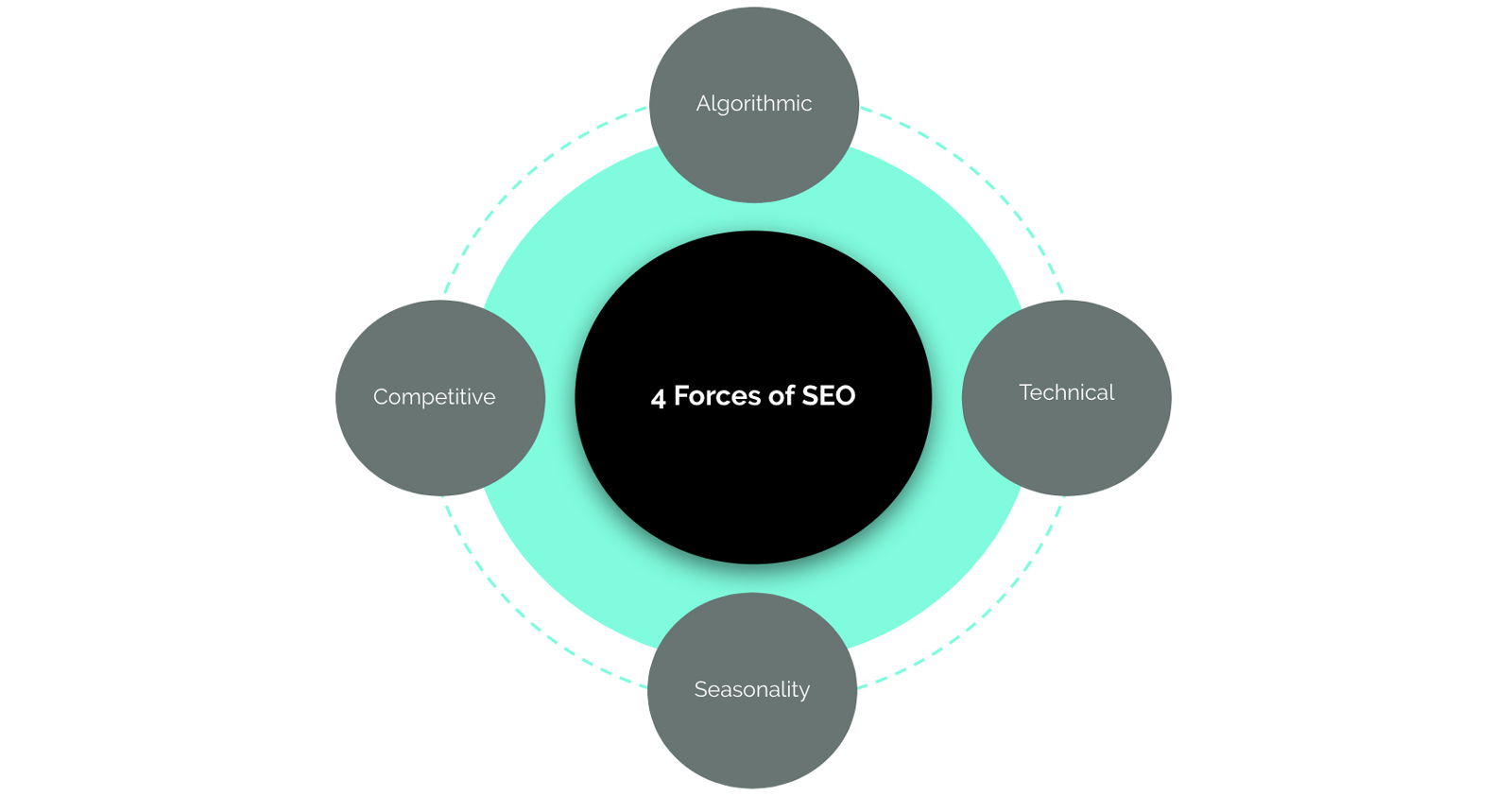What was your reaction the last time you saw a dropoff or upwards spike in organic traffic to your site?
A common response among marketers is to quickly jump to the conclusion that Google’s algorithm is at fault.
By jumping to this conclusion too quickly, you’ll end up not being able to replicate successes or worse, you’ll end up repeating your mistakes.
A systematic framework for identifying SEO issues will help you pinpoint which of the four forces of SEO are affecting your organic performance and help you more quickly identify and resolve key issues.
The 4 Forces of SEO
These forces represent the main pressures that impact SEO traffic.
For each SEO force below, we’ll discuss the definition, causes, tools for diagnosing, and methods for solving core issues.
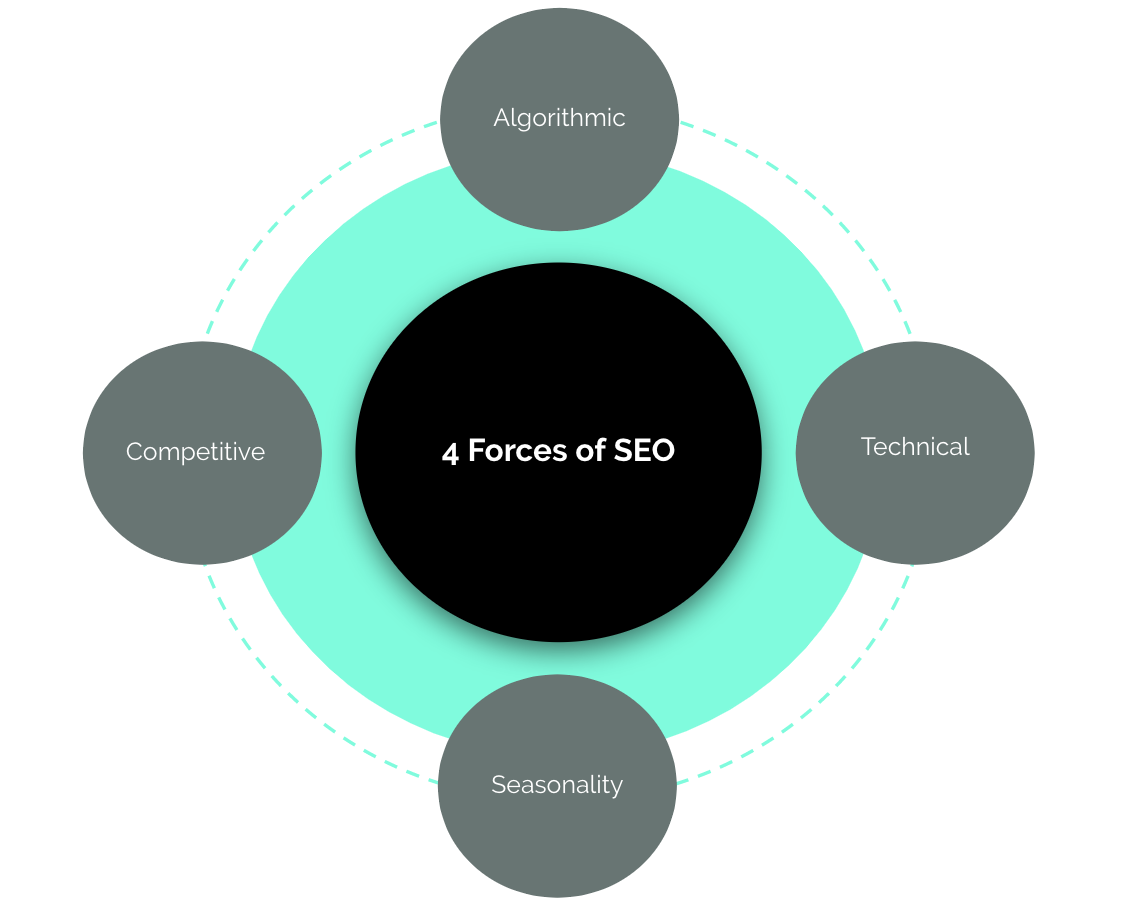
1. Algorithmic
Definition: Changes in search algorithms are affecting my organic performance.
Examples include:
- Large or small-scale updates to Google algorithms.
- Increases in featured snippets that impact the types of results that show up on a search engine results page (SERP).
- Increases in the percentage of ads on a SERP for given topics.
Diagnosing an Algorithmic Issue
1. Identify the date of the increase or decrease in traffic. Does the timeline align with an algorithmic update?
Here are a few timeline examples from Moz and SEMrush:
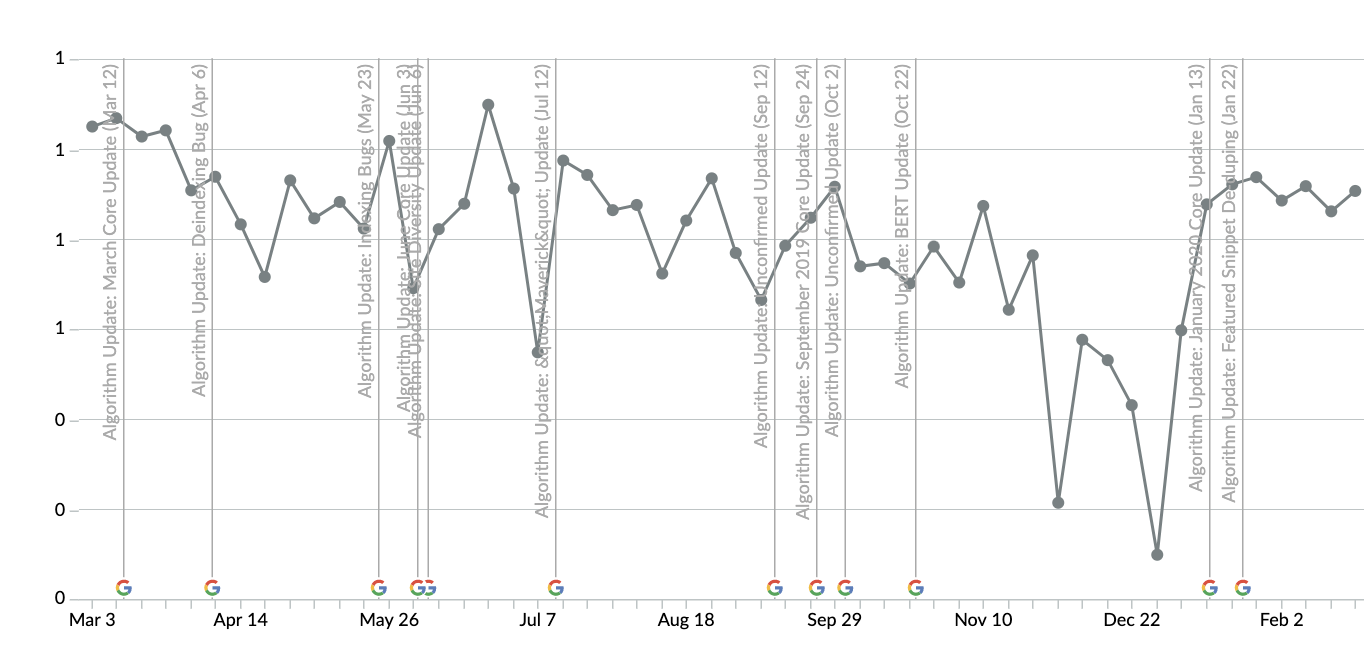
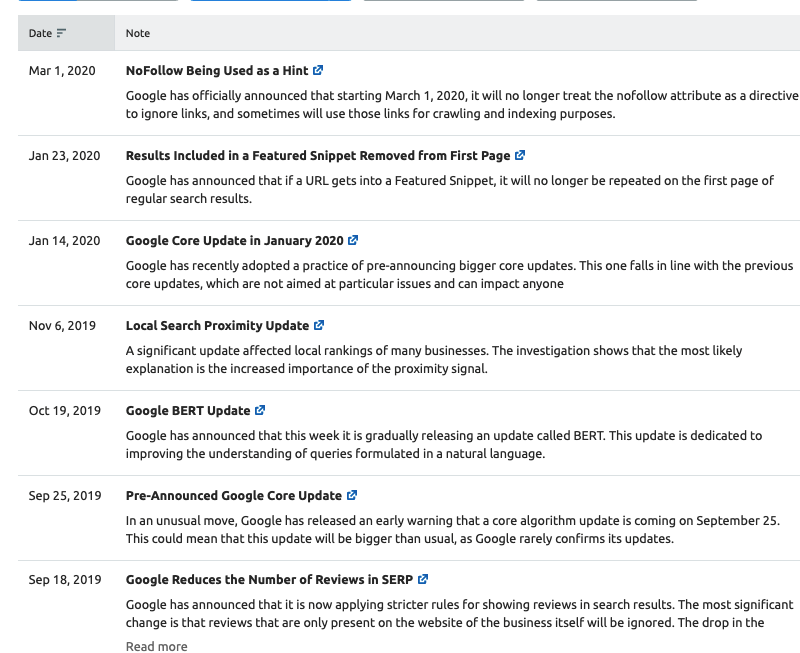
2. If no alignment, explore manual action in Google Search Console.
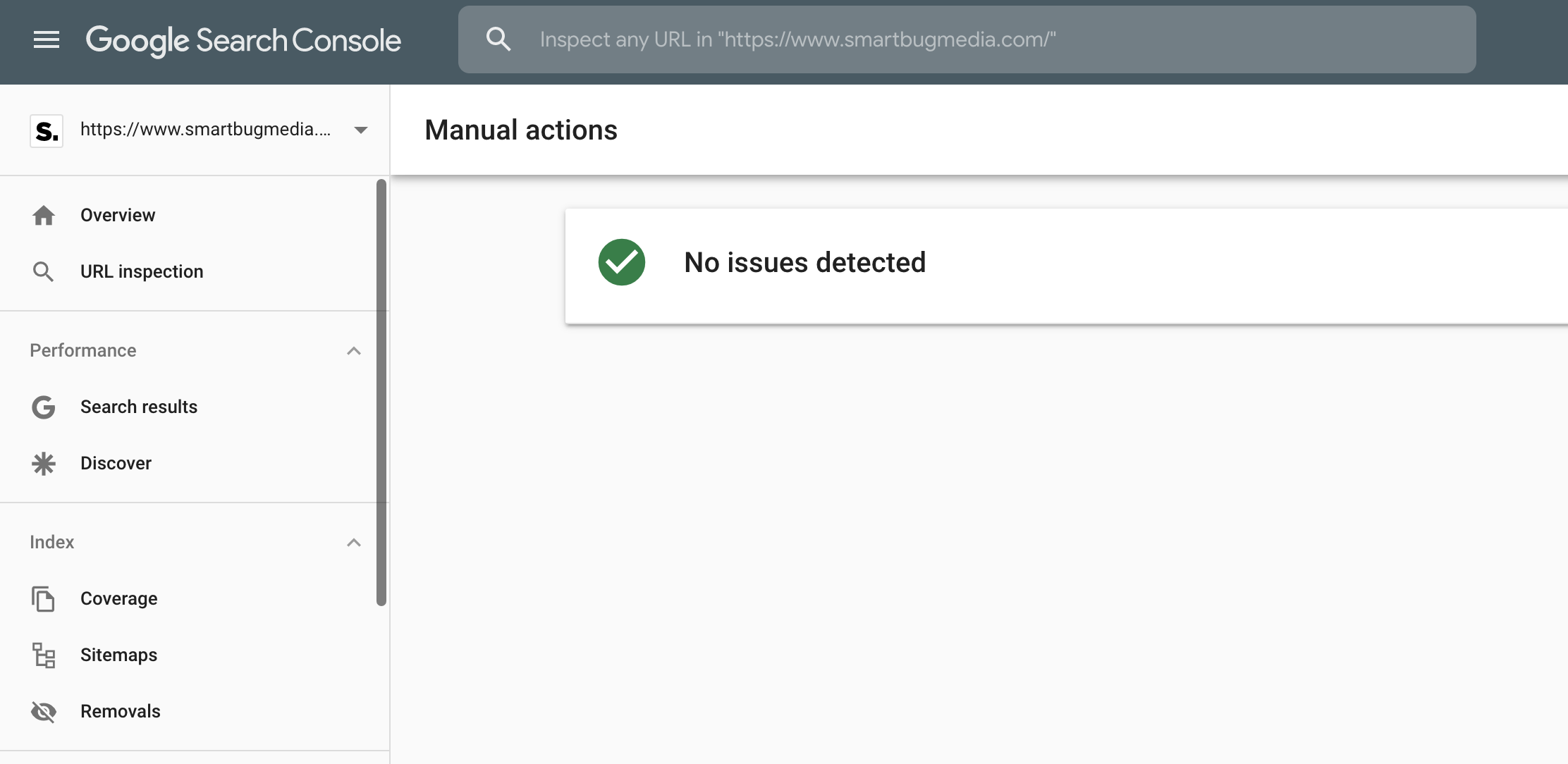
3. If no manual action, does the shift in traffic occur simultaneously with changes in SERP features?
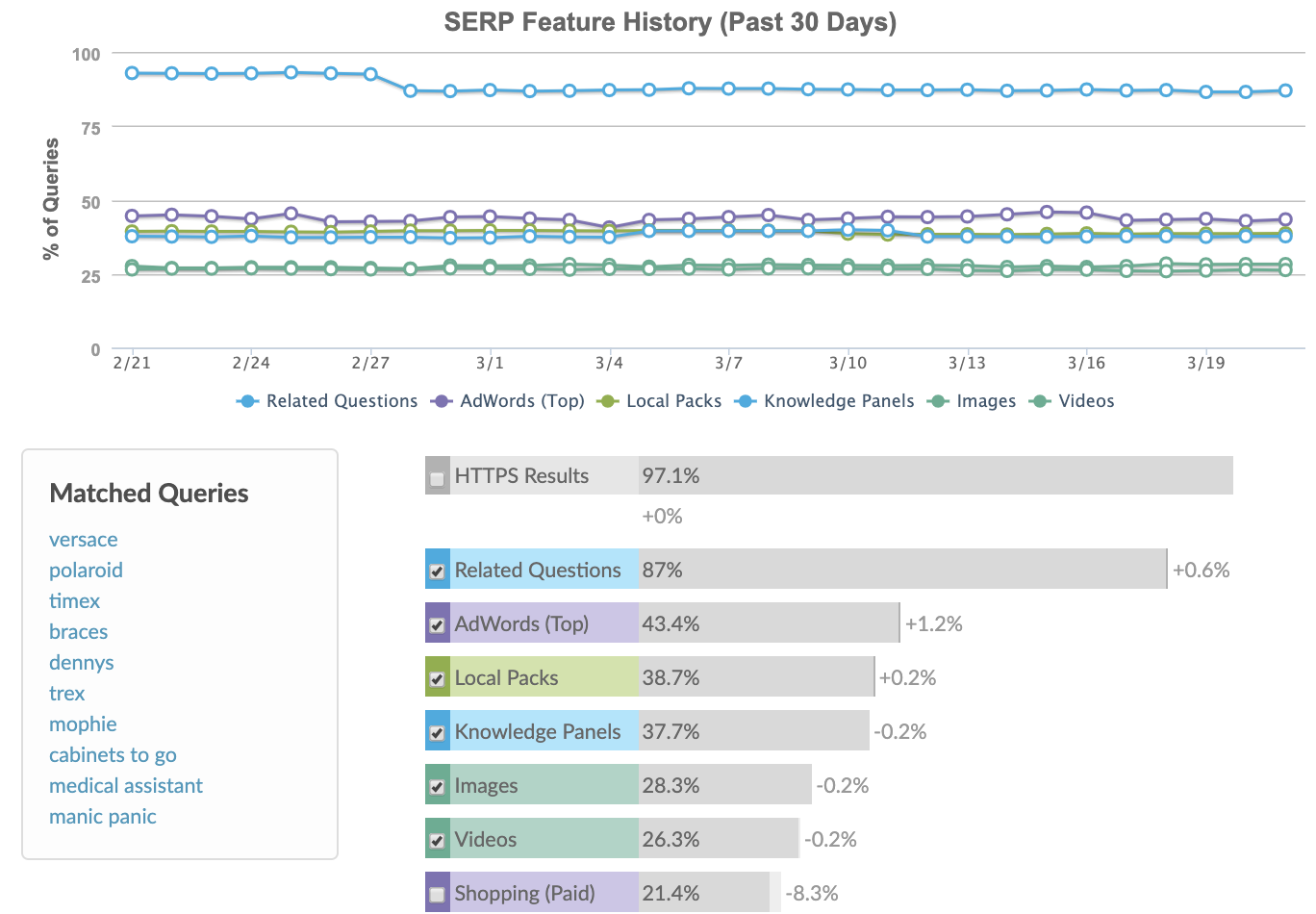
Solving an Algorithmic Issue
1. Establish the timeline of sudden ranking or organic traffic drops/gains.
2. Correlate the date with algorithm changes. If a correlation exists, identify the scale, specifics, and severity of the issue.
Gather documentation from Google Webmaster YouTube channel, industry publications, or your friendly neighborhood SEO to identify the best solution.
Unfortunately, there isn’t a silver bullet for addressing algorithmic updates. Your best starting point is to understand if the update is going to weigh off-page or on-page factors more or less.
3. If no correlation exists, check Google Search Console for manual action penalties or the MozCast for SERP feature movements
2. Technical
Definition: Changes on my website are affecting my organic performance.
Examples include:
- You added a new section of content.
- You merged two websites into one domain.
- You moved from non-secure to secure hosting.
Diagnosing a Technical Issue
Establish a timeline for technical (front-end or back-end) changes to the site. Annotations in Google Analytics or changelogs within your CMS can help you analyze this.
At a minimum, you should regularly track:
- Redesigns
- Domain consolidations
- Large-scale content additions or deletions
- CMS transitions
- Hosting transitions
- Large marketing campaigns

What correlations can you draw from the time when large scale changes were implemented to when you saw a sudden change in performance?
Solving a Technical issue
Technical issues spawn from a broad range of outputs. A technical SEO audit is your best solution in pinpointing the exact cause.
To get started, run a full crawl of your site with Screaming Frog or your favorite crawling tool.
Keep in mind, not all SEO tools can run a complete crawl of your site. Some tools will put in a cap in place around the amount or types of URLs they will crawl.
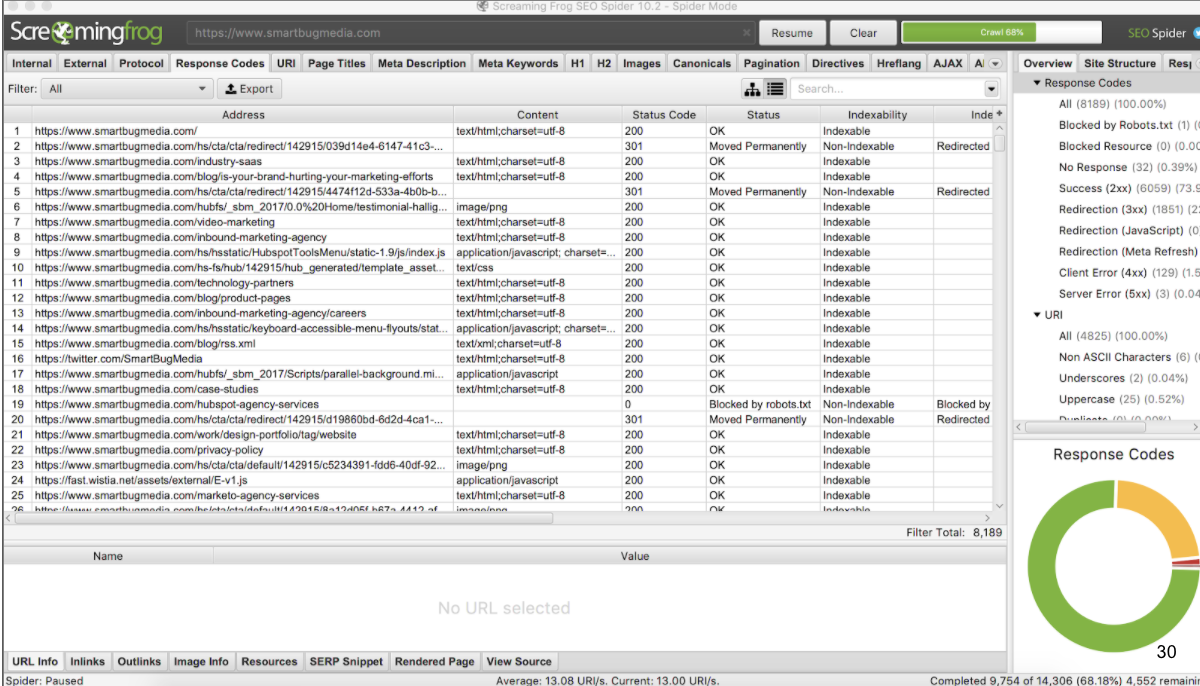
After exporting your crawl, follow this checklist as you go through each URL on your site:
- Audit for broken links (404s). 404 errors occur naturally over time, but if large sections of your site are “broken.” then take the time to address these.
- Identify temporary 302-redirects or lengthy redirect chains.
- Identify masses of your website that are low quality or thin. Redirect or consolidate these pages on your website if they aren’t providing any rankings, traffic, or conversions.
- Identify duplicate content and update with rel=canonical or no=index so that each page is unique. This is common for businesses with multiple locations that use similar or duplicate content across each store front page.
- Ensure you aren’t blocking crawlers from visiting important pages on your site via your robots.txt file.
- Audit the pages that have a higher crawl depth. Crawl depth is the calculation of how many clicks away a specific page is from the homepage. Pages that are more than 4-5 clicks away from your homepage aren’t likely crawled as often. If these pages are important for your business, then your information architecture may need to be redesigned.
Again this is just a starting point for a technical SEO audit, which is going to be more expansive. For 70-80% of technical SEO issues, you can spot glaring issues with a full website crawl.
3. Seasonality
Definition: Changes in time are affecting my organic performance.
Examples include:
- Beginning of the fiscal year
- Holidays
- Literal season changes
- Economic cycles (which can span for months or years)
Diagnosing a Seasonal Issue
Google Trends will be your best friend in identifying seasonal search trends for your targeted topics. Pull the last 5 years worth of search trends (in your targeted geography) for your core products or services.
Then identify correlations between industry search demand and your organic traffic movement.
This example shows us yearly search patterns for keywords related to “patio furniture.”
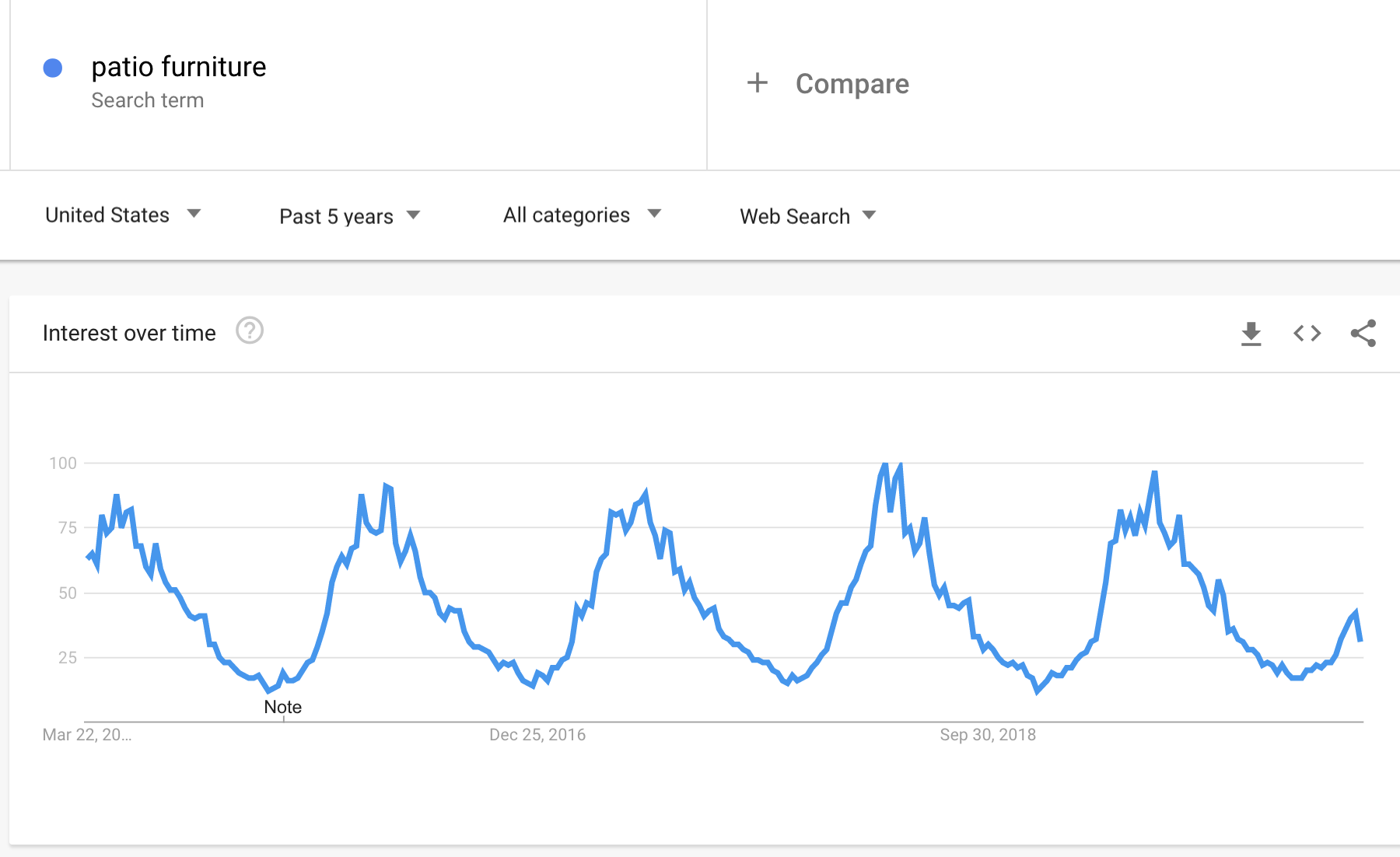
Solving a Seasonal Issue
Map out topical seasonality with your internal marketing calendar and holidays.
If you suffer from major, predictable swings in traffic during the year, identify topics that your buyer personas are searching for that are tangentially related to your business during the slow months.

In this example, a patio furniture store that generates most business in the warm months should be developing content aligned with topics for every season.
The timing in which your customer purchases your product may be cyclical but you can still find angles to connect with your buyer.
For example, people don’t stop barbecuing and socializing outside during the cooler months.
Align your topical areas with your buyer’s seasonal interests year-round.
4. Competitive
Definition: Competitive pressures are affecting my organic performance.
Examples include:
- A new competitor entering the market, a merger, or an acquisition.
- Non-competing sites competing for your keywords.
- Increases in paid media cannibalizing a larger share of clicks for target keywords.
Diagnosing a Competitive Issue
The key to understanding if you have a competitive SEO issue is gaining a greater knowledge of macro trends affecting your business, complementary and substitute products, and your buyer persona’s purchasing behavior.
Two common indicators that a competitive issue is affecting your organic search growth are:
- Multi-month/year Google Trends data.
- Your own analytics.
This example shows the growth in popularity of “meal kits” over the last five years. Consistent growth overtime for a topic is indicative that more players are entering the space.
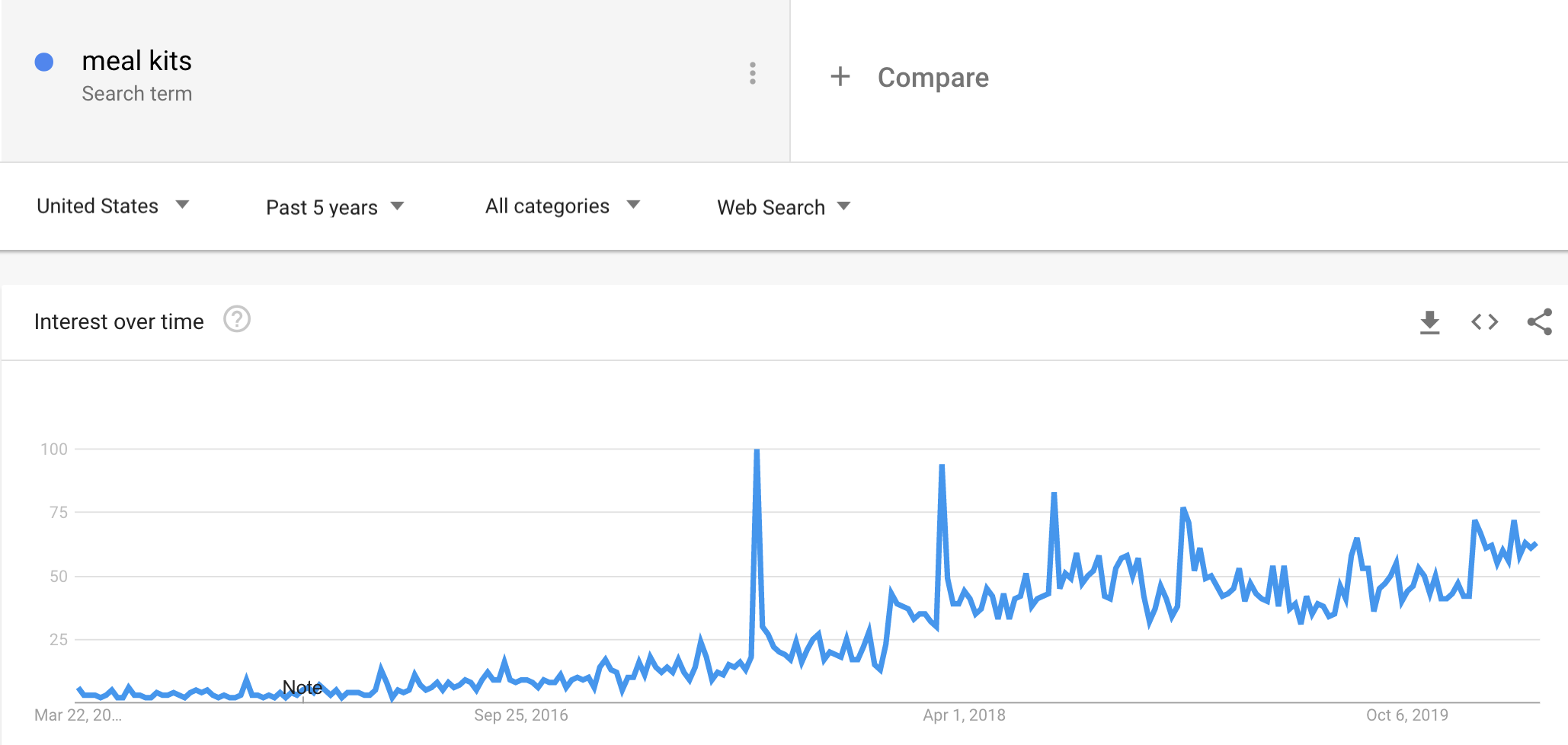
Furthermore, if Google Trends data aligns with your overall organic search traffic data, this can validate this hypothesis.
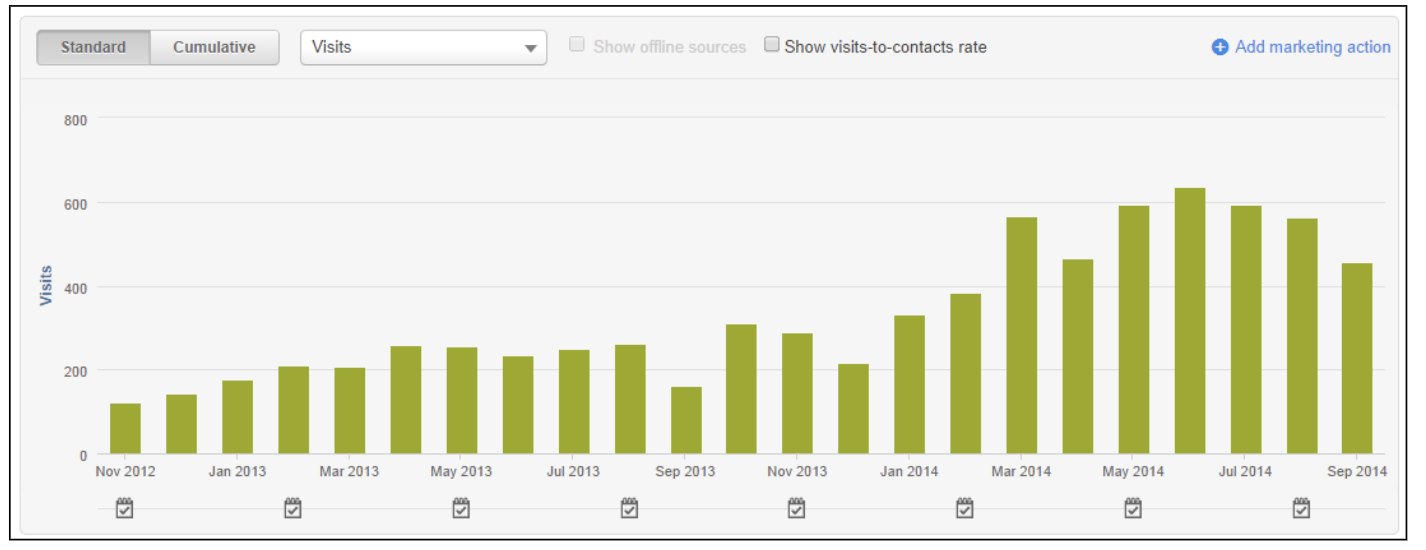
Lastly, paid search efforts by you and your competitors can play a role in cannibalizing organic search traffic. Identify if the competitive issue you are facing is due to increases in paid media investment in your industry or just more competitors investing in SEO.
Solving a Competitive Issue
1. Conduct a competitive topical analysis.
By examining competitors’ topical strengths and weaknesses, you can then drill into individual on-page factors.
The biggest reason your competitors will outrank you, from an on-page perspective, is because they have more and/or better, well-organized content on their site.
This is an example of how to conduct this topical analysis. By first categorizing all of your rankings keywords and then putting them into a pivot table, you can see these topical strengths and weaknesses.
This example shows an export of our agency’s ‘buyers journey’ related keywords vs. other Martech solutions.
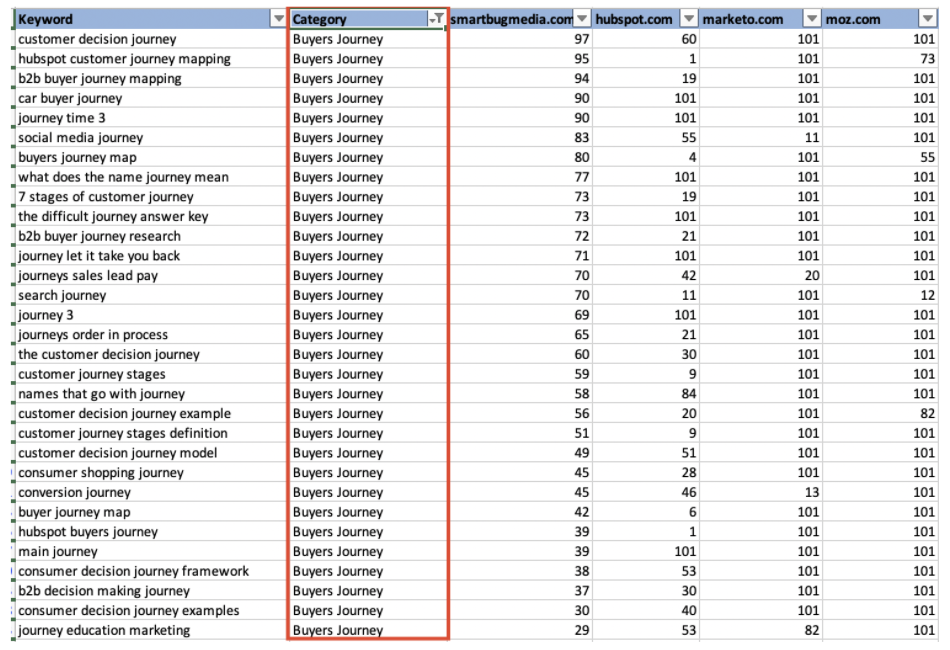
When you have all of your keywords tagged or categorized, then you can pivot these lists to get an idea of amount of keywords you rank for on the 1st page, 2nd-3rd page or buried much farther down within the SERPs.
This example report shows topical strengths for ‘blogging’ related keywords which we can gather from a simple pivot table of the data above.

Beyond content quality, information architecture is an important factor in outranking your competition.
Screaming Frog’s Force Directed Crawl Diagram Report can help you visualize the information architecture of your site to make sure your content is organized by topic and user intent and is easily accessible on your site.
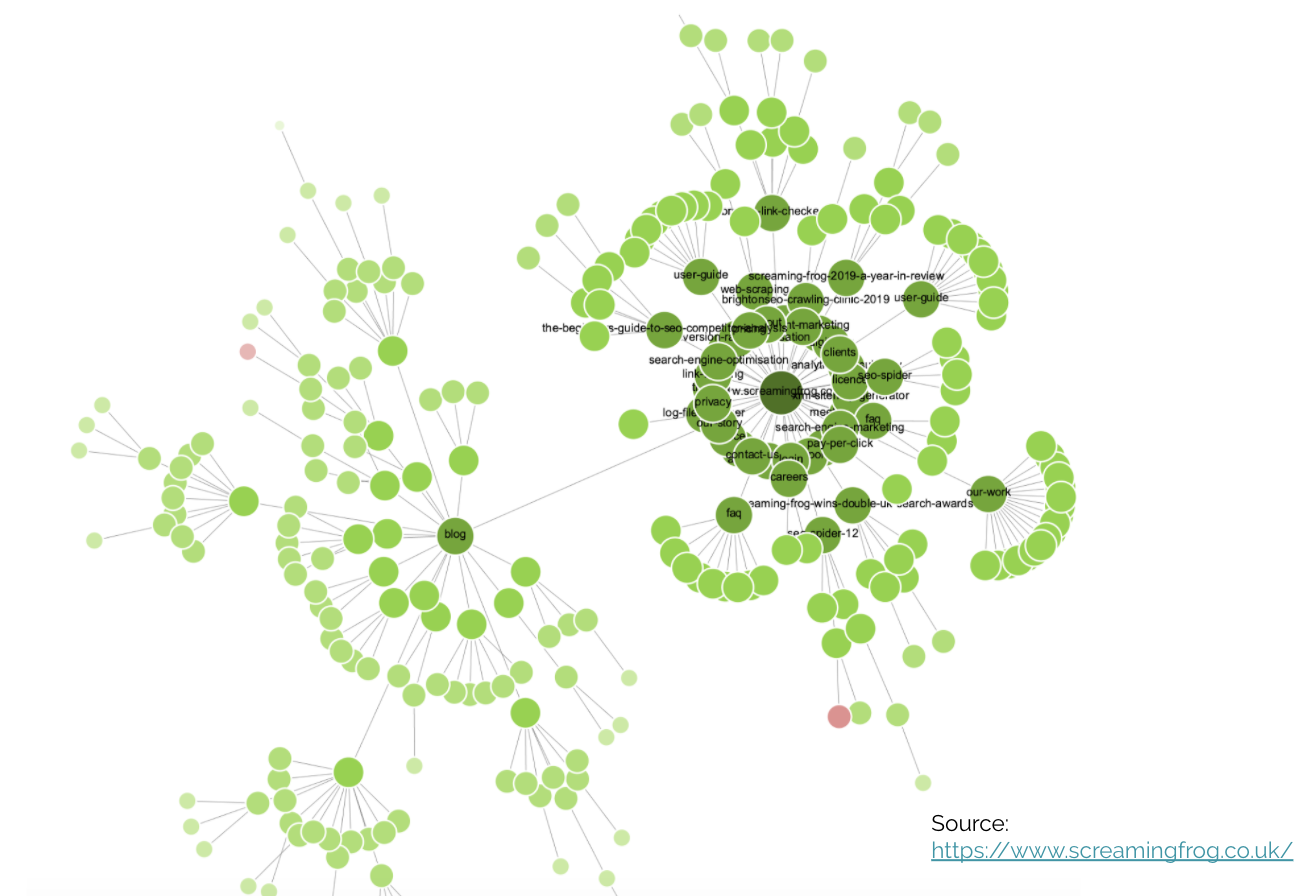
2. Conduct a competitive backlink analysis.
After looking at content and information architecture factors, you need to compare your backlink profile with your competitors.
This will allow you to understand the quantity and quality of linking root domains you need to gain in order to better compete in the SERPs.
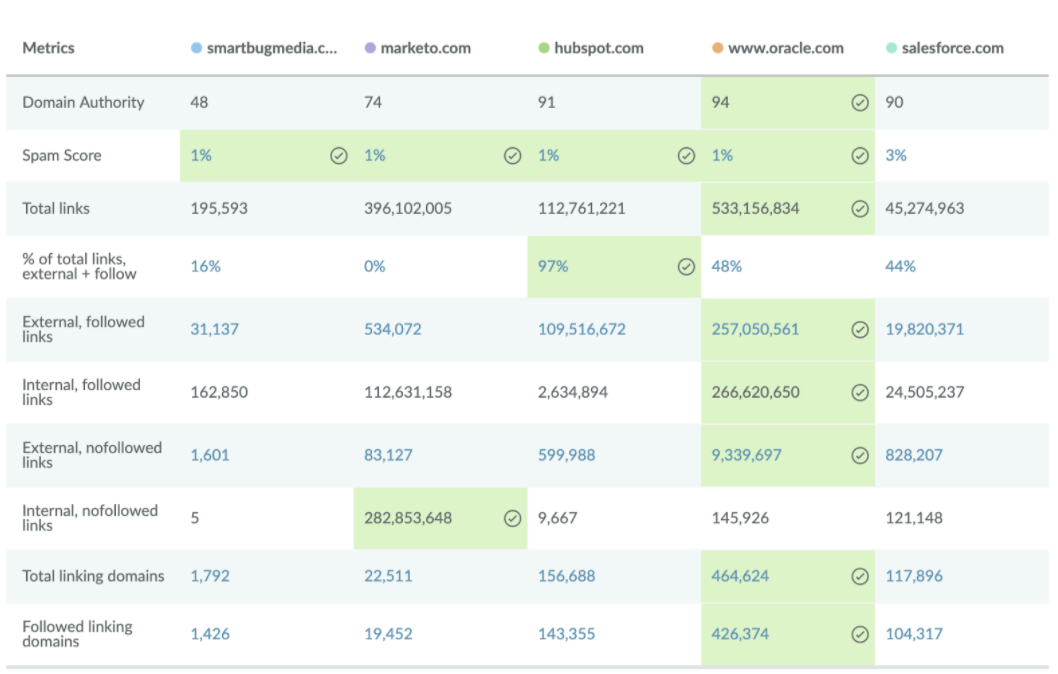
To Sum Up
Algorithmic, technical, seasonal, and competitive factors are the driving forces behind organic traffic movement.
By using this systematic approach to diagnosing SEO issues, you’ll be able to more quickly help your organization pinpoint SEO issues and prioritize your marketing efforts.
More Resources:
- A 5-Step Guide to Diagnosing Technical SEO Problems
- 5 of the Most Complex SEO Problems & How to Fix Them
- 5 SEO Realities SEO Professionals Struggle with Most
Image Credits
Featured Image: Created by author, March 2020
In-Post Image #1: Created by author, March 2020
In-Post Image #2: Moz
In-Post Image #3: SEMrush
All other screenshots taken by author, March 2020

